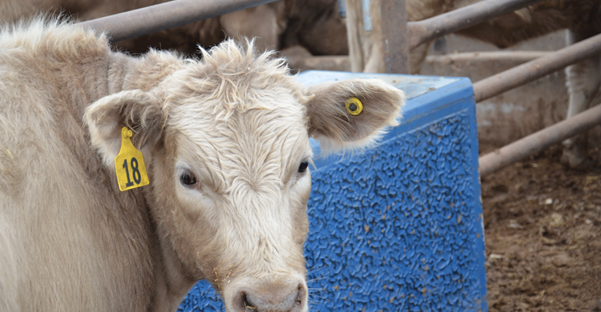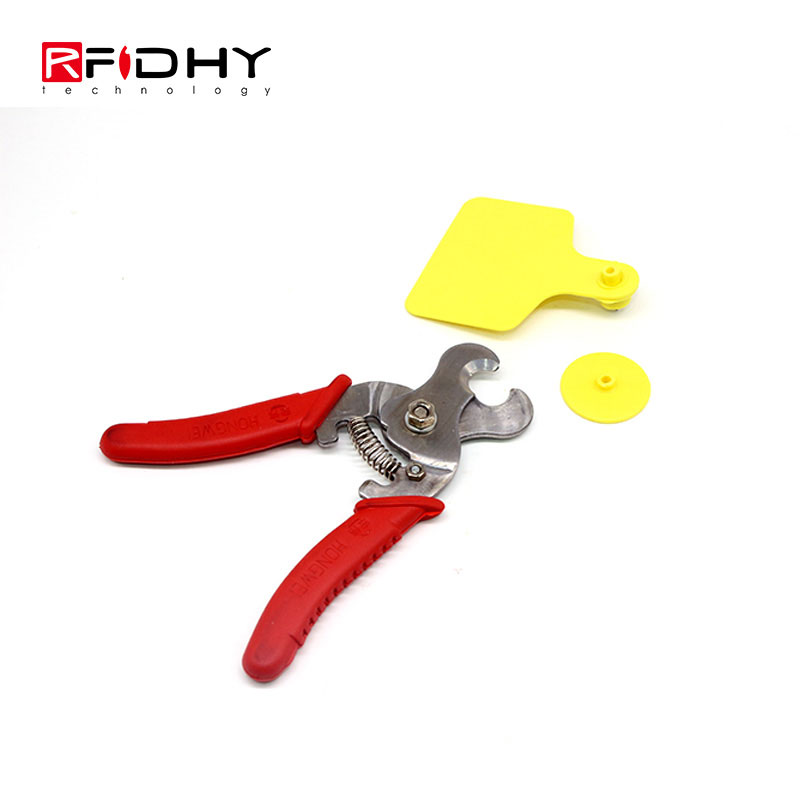A marcação auricular é uma parte importante da gestão da pecuária. A marcação é feita para identificar e monitorar o animal. Então, é importante que eles são marcados de uma maneira adequada. Enquanto, marcando um animal deve ser assegurado que eles não são infectados e as etiquetas não devem se perder durante a vida.
 O que é um ear tag?
O que é um ear tag?
Uma etiqueta de ouvido é um objeto plástico ou metálico que carrega um número de identificação sobre ele e é colocado nos ouvidos de um animal. A nova Etiqueta de Identificação Eletrônica (Eid) usa dispositivo de identificação de radiofrequência (Rfid) tecnologia para uma gestão pecuária mais eficiente. Essas etiquetas eletrônicas usam o número EID ou o número de gerenciamento no botão que é colocado na parte de trás da orelha do animal. As informações na tag são lidas e armazenadas com a ajuda de ondas de rádio.
Como é aplicada uma etiqueta de ouvido ao animal?
Uma etiqueta de ouvido carrega o número de identificação animal exclusivo de quinze dígitos (Ain) juntamente com poucos outros detalhes, como número de identificação de propriedade. O AIN consiste em um código da empresa de 3 dígitos e um número animal individual de 12 dígitos. Pode ser aplicado à mão ou por um aplicador de etiqueta de ouvido. Um animal pode ser marcado em uma orelha ou ambos, dependendo do propósito da marcação. O botão como chip RFID é fixado ao ouvido em um processo semelhante ao piercing do ouvido humano. Um leitor de identificação é usado para digitalizar e coletar os dados dessas tags, que é então baixado e armazenado em um computador. Este processo reduz as chances de erro e mantém um registro de todos os dados relacionados a um animal em um outro.
 The following points should be paid attention to in daily use and maintenance of animal ear tags:
The following points should be paid attention to in daily use and maintenance of animal ear tags:
- Settle the animal- Secure the animal and stabilize its head before tagging. An unstable animal can lead to wrong tagging and injury to the animal as well as the person who is tagging the animal. Use a cattle chute with a head gate for tagging cattle, and hog boards for pigs. E, hold the head of goats and sheep to keep them firm and stable.
- Choose the correct tagging point – Place the tag in the middle third of the ear between the upper and lower ribs. Tags placed outside the recommended area can be snagged and ripped out, and tags too close to the animal’s ear can cause pinching or necrosis.
Apply an Electronic identification (Eid) tag with the visual panel. Place male portion of the tag on the outside back of the ear with the EID button and female portion inside the ear.
- Use the applicator correctly – Place half of the tag onto the applicator. The stud should be completely onto the applicator pin and the button portion under the opposite clip. Ensure that the applicator pin is not bent or broken and the applicator is correctly aligned before tagging the animal. Once placed properly at the tagging point, firmly and quickly close the applicator and release. Thereafter, inspect the animal ear to check if tagging is done properly and record the animal data.
- Monitor infections – After the animal is tagged, watch for any infection. Apply hydrogen peroxide to the tagging point for a week to prevent the animal’s ear from getting infected. Consult a veterinarian if any serious infection occurs.
- Check EID number – When using EID tags, ensure that the number printed on the visual panel, which is the male portion of the tag should match with the 15-digit number on the electronic tag button which is the female portion.
 You may need to remove a tag in case of infections, or if the is placed wrong or when the animal is going to the slaughter house. You can remove the ear tags with an ear tag cutter which has a rubber non-slip handle. Follow the process while removing the tags:
You may need to remove a tag in case of infections, or if the is placed wrong or when the animal is going to the slaughter house. You can remove the ear tags with an ear tag cutter which has a rubber non-slip handle. Follow the process while removing the tags:
- Place the hook between the male side of the tag and the animal’s ear in a way that the blade encircles the stem of the tag.
- Firmly hold the handle and gently pull on the hook while moving it up and down in a twisting motion. The blade will slice through the stem. Don’t tug too hard as this can tear the animal’s ear.
- Clean the tag point with an antiseptic or apply hydrogen peroxide to prevent an infection
- Tattoo the tag number to the inside of the animal’s ear with a handheld animal tattoo outfit and antiseptic ink so that the animal can still be identified without an ear tag.





